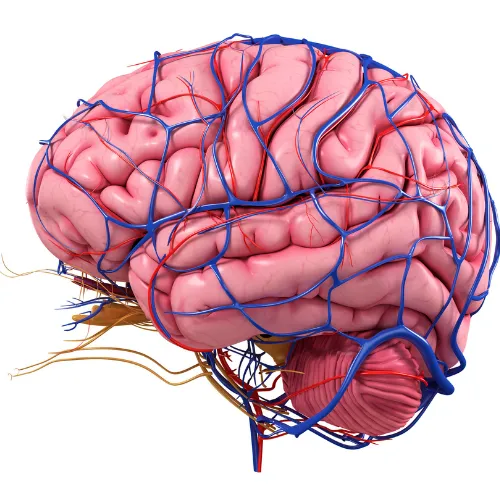ID 3.0 Research Program
The Utah Intelligent Design Network fosters a dedicated community of scholars, scientists, and thinkers committed to exploring the scientific foundations of intelligent design. Members of this network investigate the evidence for an intelligent cause behind the origin of the universe, life, and the intricate complexity observed in natural systems, while also critically examining the limitations of material mechanisms to fully account for these phenomena. Affiliated with Roots, a grassroots extension of the Discovery Institute’s Center for Science and Culture, the network actively collaborates with and supports ID-friendly researchers. Through regular discussions and studies, the Utah Intelligent Design Network contributes to a deeper understanding of design in nature and encourages broader awareness of this scientific perspective.
Intelligent design is a compelling scientific theory that generates testable predictions, which researchers worldwide are actively exploring. The ID 3.0 research program brings together a community of scientists who have collaboratively published peer-reviewed studies on design-related evidence in prestigious journals such as Nature, ACS Nano, ACS Applied Materials & Interfaces, Nature Nanotechnology, Journal of Bacteriology, Scientific Reports, Frontiers in Microbiology, Frontiers in Genetics, Annual Review of Genomics and Human Genetics, Biosystems, BMC Evolutionary Biology, BMC Genomics, Molecular Biology and Evolution, BIO-Complexity, Springer Proceedings in Mathematics and Statistics, PLOS One, and Journal of Theoretical Biology, as well as a book through Cambridge University Press and other reputable scientific publications.

Professors Doug Axe and Richard Gunasekera in their biochemistry lab at Biola University.
ID research has gone through multiple phases, roughly described below.
ID 1.0 (1984-1999)
The initial phase of intelligent design research established foundational theories for detecting design through information-based concepts, introducing ideas such as irreducible complexity, specified complexity, and the explanatory filter.
Books include The Mystery of Life’s Origins, Darwin’s Black Box, and The Design Inference.

ID 2.0 (2000-2015)
The second phase of intelligent design (ID) research initiated experimental applications of design-detection methods developed in ID 1.0 to real-world systems. This phase concentrated on investigating protein evolvability, while theorists strengthened the case for design by demonstrating its superior explanatory power through inferences to the best explanation. ID-focused laboratories also emerged, such as the Biologic Institute and the Evolutionary Informatics Lab. The latter contributed significant theoretical advancements, demonstrating that new complex and specified information requires the involvement of an intelligent agent.
Over 75 peer-reviewed publications in journals such as Protein Science, Journal of Molecular Biology, Theoretical Biology and Medical Modelling, BIO-Complexity, Journal of Advanced Computational Intelligence and Intelligent Informatics, Complexity, Quarterly Review of Biology, Rivista di Biologia / Biology Forum, Physics of Life Reviews, and Annual Review of Genetics.
ID 3.0 (2016-present)
The third phase of intelligent design research, ID 3.0, expands ID principles into new fields, demonstrating its value in guiding scientific inquiry. This phase includes exploring emerging areas like epigenetics, synthetic biology, genomics (such as the function of so-called "junk DNA"), systems biology, and cosmic fine-tuning. A key focus is uncovering unexpected genome features that reveal new layers of biological information and control. Beyond reinterpreting existing data, ID 3.0 generates fresh data and addresses questions prompted by the intelligent design framework.
Over 100 ID 3.0-related peer-reviewed papers published since 2016 in journals such as Journal of Bacteriology, Systems Engineering, BIO-Complexity, PLOS One, Biomimetics, Journal of Organic Chemistry, Science Advances, ACS Omega, EC Pharmacology and Toxicology, ACS Applied Materials & Interfaces, ACS Nano, Nature, Journal of Neurosurgery: Pediatrics, Journal of Theoretical Biology.
Types of ID Research
Pure Intelligent Design Research
Pure intelligent design (ID) research has shown that many aspects of nature reveal signs of design, suggesting that design is a useful model for understanding the natural world. This confidence in design theory enables researchers to assume its prevalence and apply design reasoning to investigate new natural systems. Pure ID research focuses on detecting design and examining natural systems to determine if design best explains their features. By refining methods of design detection, this research assesses whether a design inference is warranted for specific phenomena. Findings indicate that life, Earth, the solar system, and the universe exhibit evidence of design, often involving a critique of naturalistic explanations to support the case for design.
Applied Intelligent Design Research
Applied intelligent design (ID) research leverages the assumption of design to deepen our understanding of natural systems.
• Recognizing the genome’s rich complexity, researchers now hypothesize that design may extend throughout the genome, prompting questions about the function of "junk DNA." Applied ID research is actively predicting and uncovering functions in these previously misunderstood genome regions.
• Similarly, observing irreducible complexity in organisms suggests that design principles may shape the "blueprints" of life, encouraging new studies of biological systems. This design perspective challenges ideas like the "poor design" of the human skeleton, often revealing unexpected functions or efficiencies upon further investigation. Researchers also draw from engineering concepts, applying them to biological processes such as gene regulation, cellular communication, and blood flow, where control mechanisms from electrical engineering offer insights. Even biological adaptation might reflect design-based principles, with systems appearing preprogrammed to respond within specified limits.
Through these approaches, applied ID research continues to illuminate the intricate workings of biological systems, guided by the assumption of intentional design in nature.
HIGHLIGHTS
Below is a partial list of ID 3.0 projects, researchers, and published papers from these initiatives. To safeguard certain researchers from potential career risks associated with public involvement in ID-related work, some projects, researchers, and papers are omitted from this list. For a comprehensive collection of peer-reviewed scientific papers supporting intelligent design, please refer to Peer Reviewed Articles Supporting Intelligent Design.
Bacterial Adaptation
With their rapid generation times and large populations, bacteria serve as an ideal model for testing the creative capabilities of evolutionary mechanisms. This multifaceted project uses both lab experiments and digital simulations to investigate the evolvability of new features in bacteria and other microorganisms. In one study led by biologists Ann Gauger and the late Ralph Seelke from the University of Wisconsin-Superior, researchers disabled a gene in E. coli necessary for tryptophan synthesis. When the gene was broken in a single location, random mutations could “repair” it, but requiring just two mutations left Darwinian evolution unable to restore full function.

With their rapid generation times and large populations, bacteria serve as an ideal
model for testing the creative capabilities of evolutionary mechanisms. This multifaceted project uses both lab experiments and digital simulations to investigate the evolvability of new features in bacteria and other microorganisms. In one study led by biologists Ann Gauger and the late Ralph Seelke from the University of Wisconsin-Superior, researchers disabled a gene in E. coli necessary for tryptophan synthesis. When the gene was broken in a single location, random mutations could “repair” it, but requiring just two mutations left Darwinian evolution unable to restore full function.
Theoretical simulations further highlight limitations in Darwinian evolution. Douglas Axe’s simulation tool, Stylus, models both protein evolution and the “long-term evolution” of a population of 1,000 digital organisms, finding that over time they experience “genome decay,” suggesting that an external input of information may be essential for sustaining and evolving species.

Brain Blood Flow
Each heartbeat sends a pulse of blood to the brain, but without precise control, these pulses would damage the brain’s delicate capillaries. Approaching the brain as a “designed system,” pediatric neurosurgeon and professor Michael Egnor from Stony Brook University has explored how our physiology allows smooth, regulated blood flow in the brain (Egnor 2019). Egnor’s research reveals that brain capillary blood flow operates via a band-stop filter, while cerebrospinal fluid flow is regulated by a band-pass filter — indicators of intelligent design in the brain’s circulatory control. His team has published findings in BIO-Complexity and the Journal of Neurosurgery Pediatrics, with further studies underway to refine the blood flow control model.
Cancer and Bacteria-Killing Nanomachines
One of the largest and most impactful ID 3.0 research projects, led by renowned organic chemist Prof. James Tour at Rice University and biologist Richard Gunasekera from Biola University, focuses on the design of nanomachines. Tour’s team initially created tiny nanocars — 50,000 of which could fit across a human hair — to showcase advanced techniques in nanomachinery design. Through this work, Tour developed a significant critique of chemical evolutionary theory, demonstrating that even simple nanomachines require a series of precisely orchestrated chemical steps and intentional interventions. He argues that this level of complexity implies that the origin of life and its molecular machinery are unlikely to arise from undirected chemical processes alone.

One of the largest and most impactful ID 3.0 research projects, led by renowned organic chemist Prof. James Tour at Rice University and biologist Richard Gunasekera from Biola University, focuses on the design of nanomachines. Tour’s team initially created tiny nanocars — 50,000 of which could fit across a human hair — to showcase advanced techniques in nanomachinery design. Through this work, Tour developed a significant critique of chemical evolutionary theory, demonstrating that even simple nanomachines require a series of precisely orchestrated chemical steps and intentional interventions. He argues that this level of complexity implies that the origin of life and its molecular machinery are unlikely to arise from undirected chemical processes alone.

Design Detection
Design detection is a core component of intelligent design (ID) theory, aiming to pinpoint the logical principles humans use to recognize designed systems. This theoretical work began notably in 1998 with William Dembski’s book The Design Inference: Eliminating Chance Through Small Probabilities, published by Cambridge University Press. In it, Dembski introduced key concepts like the explanatory filter and complex specified information (CSI) for detecting design. He later advanced these ideas by incorporating “No Free Lunch” theorems and the Law of Conservation of Information, which propose that while evolutionary mechanisms may rearrange CSI, only intelligence can create genuinely new CSI. According to these principles, without “active information” from an intelligent source, searches such as Darwinian evolution fare no better than random guessing. This approach has been applied to various evolutionary simulations, revealing where programmers introduced active information to guide outcomes.
Further research has refined techniques to quantify information and detect design, including the development of algorithmic specified complexity as a measure of specification based on description length. This project continues to expand on theoretical insights, providing strong evidence that only intelligence can generate novel, complex, and specified information.


